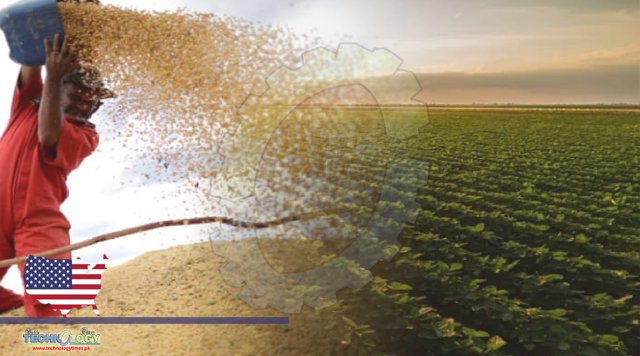Researchers increased yield in soy plants by making them better at photosynthesis, the process that powers life. The findings hold promise for feeding a warming world.

For decades, scientists have pursued a tantalizing possibility for bolstering food supplies and easing hunger for the world’s poorest: improving photosynthesis, the biological process in plants that sustains nearly all life on Earth. Now, researchers say that by using genetic modifications to increase the efficiency of photosynthesis, they significantly increased yields in a food crop, soybeans, providing a glimmer of potential that such methods could someday put more food on tables as climate change and other threats make it harder for vulnerable populations across the globe to feed their families. The scientists tested their gene alterations on soy plants grown in a single location during just two crop seasons. In interviews, they acknowledged that more trials were needed to see whether their results would hold up across different environments and weather conditions. Their methods will also have to pass muster with government regulators before crops transformed this way will ever reach farmers’ fields. And soy much of which is grown to feed livestock, not humans — is just a start. Longer term, the researchers are hoping to raise yields in staple foods like rice, cowpea and cassava. But with the world projected to require big increases in food production in order to meet demand in the coming decades, the findings suggest that such genetic tinkering holds promise for meeting those needs, said Amanda P. De Souza, a crop scientist at the University of Illinois Urbana-Champaign and lead author of a new study describing the results, which was published Thursday in the journal Science.
“There is a long road to get there,” Dr. De Souza said. But “now is the hour,” she said, to work toward as many new solutions as possible.Humankind’s ability to feed itself is under pressure as societies use land and water resources in unsustainable ways. Human-caused climate change is threatening to exacerbate the problem, with increased droughts and storms causing more disruptions to food supplies. Food production is itself a major contributor to global warming, including through the clearing of forested land for crops and grazing animals.Without major changes to agriculture, governments’ targets for mitigating climate change are at risk, scientists warn. Yet addressing malnutrition and hunger in the short term might require pressing more land and other resources into service, which could accentuate warming.
That is why scientific advancements that could help us produce more nourishment without using more land, whether by improving photosynthesis or otherwise, hold such promise. “Human civilization is at a point where we just have to get a lot more from less,” said Daniel Nepstad, executive director of Earth Innovation Institute, a research group. Even so, there are other solutions that might provide relief more quickly than engineering better crops, said Jonathan Foley, a climate scientist who runs Project Drawdown, a nonprofit that promotes efforts to reduce greenhouse gas emissions. He cited shifting diets away from meat, for instance. Or reducing food waste. “I always wonder,” Dr. Foley said. “Why are we missing the elephants in the room while chasing the mice?” In the second half of the 20th century, many scientists saw tweaks to photosynthesis, the process through which plants use sunlight, water and carbon dioxide to produce oxygen and energy-rich carbohydrates, as a next frontier for improving crop performance. But they struggled to make progress. Some scientists came to believe there were biological factors preventing plants from translating more efficient photosynthesis into additional growth.
Source: This news is originally published by nytimes